एक्सकैलिबर स्टीवेंस विश्वास
विक्टोरिया मेमोरियल
लंबे अरसे से कोलकाता में पर्यावरण संकट की अनदेखी हो रही है।विक्टोरिया मेमोरियल खतरे में लंबे अरसे से । पर अदलती आदेशों को ताक पर रखा जा रहा है। कोलकाता महानगर के प्राणकेंद्र मैदान पर्यावरण की दृष्टि से अतिशय महत्वपूर्ण है जो हमेशा राजनीतिक शक्तिपरीक्षण का अखाड़ा बनता आ रहा है। पर्यावरण संकट और अदालती आदेशों की वजह से मैदान से विक्टचोरिया मेमोरियल की नाक पर हर साल आयोजित होनेवाला पुस्तकमेला तो मिलनमेला में महानगर के बाहरी इलाके में स्थानांतरित हो गया है। पर महानगर जिस आत्रामघाती राजनीति के हाथों खिलौना बनकर अपने वजूद के लिए छटफटा रहा है, उसे कोई अदालती आदेश स्थानांतरित तो नहीं कर सकता!हालत यह है कि सरकार और प्रशासन को बंगाल और भारत की ऐतिहासिक विरासत विक्टोरिया मेमोरियल की तो कोई परवाह नहीं है, पर राजभवन के रंगरोगन के लिए पूरे आठ करोड़ खर्च हो रहे हैं। जबकि राजकोष करीब करीब शून्य भंडार का पर्याय बन चला है।
पूरे दस साल हो चुके जबकि कोलकाता हाईकोर्ट में खतरे में पड़े विक्टोरिया मेमोरियल के संरक्षण के लिए पर्यावरणविद सुभाष दत्त ने जनहित याचिका दायर की थी। पर्यावरण प्रदूषण से विक्टोरिया को बचाने लिए माननीय हाईकोर्ट ने एक दो बार नहीं, बल्कि इस बीच आठ आठ बार निर्देश जारी किये। पर ढाक के वही तीन पात।पूर्ववर्ती वाम सरकार हो या मौजूदा मां माटी की सरकार, किसी ने इन आदेशों के मुताबिक कार्रवाई करने की सदिच्छा नहीं दिखायी।मसलन, कोलकाता हाईकोर्ट और सुप्रीम कोर्ट के आदेश के बावजूद धर्मतल्ला स्थित बस अड्डा को हटाने के लिए अभी सरकार ने कुछ नहीं किया।कई साल हो गये इस आदेश को जारी किये।इसके विपरीत, लाट साहब के राजभवन की विरासत को सहेजने के लिए खास इंतजाम किये गये हैं।बरहाल इसके लिए हाईकोर्ट सुप्रीमकोर्ट के आदेशों की जरुरत नहीं पड़ी।राजभवन 200 वर्ष पुराना है। ब्रिटिश शासनकाल के प्रारंभिक वर्षों में जब कोलकाता ब्रिटिश-भारत की राजधानी हुआ करता था तब राजभवन वायसराय का आधिकारिक निवास था। अब यह भवन पश्चिम बंगाल के राज्यपाल का निवास स्थल है।विक्टोरिया मेमोरियल (विक्टोरिया स्मारक) कोलकाता में स्थित एक स्मारक है। १९०६-१९२१ के बीच निर्मित यह स्मारक रानी विक्टोरिया को समर्पित है। इस स्मारक में शिल्पकला का सुंदर मिश्रण है।गौरतलब है कि अपनी दो दिन की यात्रा पर कोलकाता पहुंचीं अमेरिकी विदेश मंत्री हिलेरी क्लिंटन विक्टोरिया मेमोरियल का दौरा किया था। विक्टोरिया मेमोरियल क्वीन विक्टोरिया के शाही जीवन का झरोखा है, जो यहाँ आने वालों को बीते समय में लेकर जाता है।कोलकाता हाईकोर्ट ने सितंबर, 2007 में विक्टोरिया मेमोरियल के निकट मेलों और सार्वजनिक सभाओं के आयोजन पर पाबंदी लगा दी और लाल बत्तियों तथा कार पार्किंग की जगहों को भी हटाने का आदेश दिया।तभी
शहर के धर्मतल्ला स्थित मुख्य बस टर्मिनल को किसी अन्य स्थान पर ले जाने के लिए छह महीने का समय दिया गया था।
तब अपने आदेश में जस्टिस भास्कर भट्टाचार्य और जस्टिस आरएस बंदोपाध्याय ने कहा कि किसी भी होटल या रेस्तरां को ऐसे किसी इंधन से खाना पकाने की अनुमति नहीं दी जानी चाहिए जिससे धुआँ या भाप निकलती हो।न्यायालय ने कहा कि खाना बनाने के लिए कुकिंग गैस जैसे स्वच्छ ईंधन का प्रयोग करना होगा।
न्यायाधीशों ने कहा कि शहर के मुख्य बस टर्मिनल को विक्टोरिया मेमोरियल से कम से कम तीन किलोमीटर दूर स्थानांतरित करना होगा।
इसके अलावा कोलकाता हाईकोर्ट ने एसएसकेएम अस्पताल के भीतर कोयले को चूल्हे बंद करने का आदेश जारी किया था, जिसे पालन नहीं किया गया तो इससे क्षुब्ध होकर अदालत ने एसएसकेएम अस्पताल के सुपर को अदालत की अवमानना का नोटिस दे दिया। हाईकोर्ट ने विक्टोरिया मेमोरियल के तीन किलोमीटर के दायरे में प्रदूषण मुक्त रखने के लिए एसएसकेएस अस्पताल को भी 28 सितंबर 2007 को आदेश दिया था कि वह अस्पताल प्रांगण में चल रहे केन्टीनों में कोयले के चूल्हे को बंद कर गैस के चूल्हे लगाने की व्यवस्था करे। आदेश में एक महीने के भीतर इस पर कार्रवाई करने को कहा गया था।
अब हाईकोर्ट ने इस मामले में फरियादी पर्यावरणविद को निर्देश जारी किया है कि अदालत ने अब तक जो आदेश जारी किये हैं, उनका ब्यौरा एक रपट के रुप में अदाल में पेश करे।न्यायाधीश असीम कुमार बंदोपाध्याय और न्यायधीश शुक्ला कबीर सिन्हा की खंडपीठ ने यह निर्देश दिया।इस सिलेसिले में फरियादी को कोर्ट अफसर की मदद भी मिलेगी।इसी परिप्रेक्ष्य में हाईकोर्ट ने विक्टोरिया मेमोरियल परिसर में मेमोरियल के अधिकारियों और विदेसी अतिथियों की गाड़ियों के प्रवेश पर रोक लगाने के लिए भी प्रशासन को निर्देश जारी किया है।
विडंबना है कि अदालती आदेश अब गरीबों की आजीविका छीनने के काम रहा है।इस धरोहर और महानगर की एक और पहचान भी है। वह हैं इस इमारत के सामने सजे धजे तांगे.इन तांगों को विक्टोरिया या फिटन भी कहा जाता है। तांगे वालों का यह कारोबार भी उतना ही पुराना है जितनी विक्टोरिया मेमोरियल की इमारत। लेकिन बाकी अदालती आदेशो पर अमल करने से परहेज करने वाली ममता बनर्जी की अगुवाई वाली सरकार के ताजा फरमान से इस धरोहर पर खतरा मंडराने लगा है। पुलिस ने इन तांगा मालिकों को दोपहर दो से रात आठ बजे तक विक्टोरिया मेमोरियल के आसपास तांगा नहीं चलाने का निर्देश दिया है। इसके साथ ही कई पीढ़ियों से इस पेशे में रहे सैकड़ों लोगों की रोजी-रोटी भी खतरे में पड़ गई है।दरअसल, पुलिस के इस फरमान की वजह मुख्यमंत्री ममता बनर्जी की नाराजगी है। वह इन तांगों को खींचने वाले घोड़ों की ओर से फैलाई जाने वाली गंदगी और बदबू से नाराज हैं। उनके कहने पर ही पुलिस ने इन तांगों या विक्टोरिया पर तमाम पाबंदियां लगा दी हैं। उनके मालिकों से विक्टोरिया मेमोरियल से सटे मैदान इलाके से दूर तांगा रखने को कहा गया है।
पर्यावरण प्रदूषण का आलम यह है कि मेमोरियल के सिरे पर स्थापित एक परी की मूर्ति "एंजल आफ़ विक्टरी" के घूमने में रुकावट आयी थी, वह भी इमारत का रख-रखाव करते हुए धूल-मिट्टी के कारण इसके बेयरिंग के जाम होने से। काले कांसे से बनी 16 फिट की इस मूर्ति का वजन तीन टन है। 23 बाल-बेयरिंगों की सहायता से इसे ऐसे स्थापित किया गया है कि 15 की.मी. की गति से हवा के चलते ही यह उसकी दिशा में घूम जाती है। यानि यह हवा की दिशा बतलाने वाला यंत्र है।पहली बार 1985 में इसके घूमने में रुकावट आयी थी,तुरंत ठीक भी कर लिया गया था।पर 1999 में आकाशीय बिजली के गिरने से इसका घूमना बिल्कुल बंद हो गया था। पर 6 सालों की अथक मेहनत से इसे फिर अपनी पूर्वावस्था में लाने में कामयाबी हासिल कर ली गयी। गौरतलब है कि 1921 में बनाया गया यह अजूबा वर्षों-वर्ष बिना किसी खराबी के अपनी कसौटी पर खरा उतरता रहा।
विक्टोरिया मेमोरियल | |
| | |
| विवरण | विक्टोरिया मेमोरियल एक स्मारक है जो रानी विक्टोरिया को समर्पित है। |
राज्य | |
ज़िला | |
स्थापना | |
भौगोलिक स्थिति | |
मार्ग स्थिति | विक्टोरिया मेमोरियल हावड़ा जंक्शन से लगभग 7 किमी की दूरी पर स्थित है। |
प्रसिद्धि | मेमोरियल में एक शानदार संग्रहालय है, जहाँ रानी के पियानो और स्टडी-डेस्क सहित 3000 से अधिक वस्तुएं प्रदर्शित की गई हैं। |
कैसे पहुँचें | हवाई जहाज़, रेल, बस आदि |
नेताजी सुभाष चंद्र बोस अंतर्राष्ट्रीय हवाई अड्डा व दमदम हवाई अड्डा | |
हावड़ा जंक्शन, सियालदह जंक्शन | |
बस अड्डा, कोलकाता | |
साइकिल-रिक्शा, ऑटो-रिक्शा, मीटर-टैक्सी, सिटी बस, ट्राम और मेट्रो रेल | |
कहाँ ठहरें | होटल, अतिथि ग्रह, धर्मशाला |
एस.टी.डी. कोड | 033 |
ए.टी.एम | लगभग सभी |
अन्य जानकारी | मार्बल का बना यह स्मारक ब्रिटिश और मुग़ल वास्तुशैली का अद्भुत संगम है। इसके मुग़ल शैली के गुंबदों में सारसेनिक और पुनर्जागरण काल की शैलियाँ दिखाई पड़ती हैं। |
अद्यतन | 17:14, 5 मार्च 2012 (IST) |
Victoria Memorial (India)
This article has multiple issues. Please help improve it or discuss these issues on thetalk page.
|
Coordinates: 22.5449°N 88.3425°E
| Victoria Memorial Hall | |
|---|---|
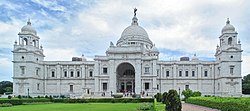 | |
| Established | 1921 |
| Location | Queen's Way, Kolkata, WB, India |
| Type | Museum |
| Collection size | Nearly 30,000 (as on March 31, 2009)[1] |
| Curator | Prof.Swapan Chakraborty |
| Website | victoriamemorial-cal.org |
The Victoria Memorial, officially the Victoria Memorial Hall, is a memorial building dedicated to Victoria, Empress of India , which is located in Kolkata (Calcutta), India – the capital of West Bengal and a former capital of British India. It currently serves as a museum and a tourist attraction.[2] It is an autonomous organization within theGovernment of India's Ministry of Culture.
Contents[hide] |
[edit]Design and construction
The memorial was designed by Sir William Emerson [3] using Indo-Saracenic style, incorporating Mughal elements in the structure. Lord Redesdale and Sir David Prain designed the gardens. The foundation stone of the memorial was laid down in the year 1906. The monument was intended to serve as a tribute to the success of the British Empire in India.
Architect Sir William Emerson laid down the actual plan of the memorial. The design of the structure represents a fusion of British and Mughal architecture. White Makrana marbles were used in the construction of Victoria Memorial Hall and the building was inaugurated in the year 1921. The massive hall is 338 feet (103 m) by 228 feet (69 m) and rises to a height of 184 feet (56 m).
British government money was not used in its construction at all. Rather, the British Indian states, along with the individuals who wanted some favours from the British government, were the main contributors towards the cost of building the Victoria Memorial Hall.[citation needed]
The massive Victoria Memorial stands enclosed within 64 acres (260,000 m2) of blooming gardens. It houses a museum containing a large collection of memorabilia relating to Queen Victoria and the British presence in India as well as other exhibits. The Memorial also contains a Royal Gallery housing a number of portraits of Queen Victoria and Prince Albert and paintings illustrating their lives.
After India gained independence in the year 1947, certain additions were made to the Victoria Memorial. These additions formed National Leader's Gallery, containing the portraits and relics relating to Indian independence.
[edit]History
On the death of Queen Victoria in January 1901, Lord Curzon, who was then Viceroy of India, placed before the public the question of setting up a fitting memorial to the Queen. He suggested that the most suitable memorial would be a "stately", spacious, monumental and grand building surrounded by an exquisite garden.This was to be a historical museum where people could see before them pictures and statues of men who played a prominent part in the history of this country and develop a pride in their past building, while the work of construction was entrusted to Messrs. Martin & Co. of Calcutta. Vincent J. Esch was the superintending architect. The princes and people of India responded generously to his appeal for funds and the total cost of construction of this monument amounting to one crore, five lakhs of rupees, was entirely derived from their voluntary subscriptions.Sir William Emerson, President of the British Institute of Architects, designed and drew up the plan of this History.
[edit]Architecture
The building is 184 ft (56 m) high up to the base of the figure of Victory, which is another 16 ft (4.9 m) high. The groups of figures above the north porch represent Motherhood, Prudence and Learning. Surrounding the main dome are figures of Art, Architecture, Justice, Charity etc. The Memorial is situated on a 64 acres of land with the building covering 338 by 228 ft (103 by 69 m). The total cost of construction of this monument amounting to one crore, and five lakhs of rupees (![]() 1.05 crore (US$191,100)) was entirely derived from their voluntary subscriptions. The Architect entrusted with the design was William Emerson. A pupil of William Burges, Emerson had first visited India almost forty years before. His early works in the sub- continent included the famous Crawford Market in Bombay (now Mumbai) in 1865 and the splendid but incomplete All Saints Cathedral, Allahabad (1869–1893). In these and some other early projects Emerson experimented with medieval Gothic styles, in the manner of his teachers. But the design of his other great work in Allahabad,Muir College in 1873, is more eclectic. Drawing on Venetian, Egyptian and Deccani sources, this was one of the first essays in the Indo-Saracenic Movement. Like the contemporary Senate House in Madras (now Chennai) by R. F. Chisholm, it is a colourful and extravagant building, combining forms from the Islamic architecture of various regions with a European structure. Moving from British India to the princely state of Bhavnagar in Gujrat, Emerson continued in a similar way with the Takhtsingji Hospital (1879–93) and the Palace (1894–95). Here at the request of his patron, he introduced forms from Hindu architecture, such as corbelled arches.
1.05 crore (US$191,100)) was entirely derived from their voluntary subscriptions. The Architect entrusted with the design was William Emerson. A pupil of William Burges, Emerson had first visited India almost forty years before. His early works in the sub- continent included the famous Crawford Market in Bombay (now Mumbai) in 1865 and the splendid but incomplete All Saints Cathedral, Allahabad (1869–1893). In these and some other early projects Emerson experimented with medieval Gothic styles, in the manner of his teachers. But the design of his other great work in Allahabad,Muir College in 1873, is more eclectic. Drawing on Venetian, Egyptian and Deccani sources, this was one of the first essays in the Indo-Saracenic Movement. Like the contemporary Senate House in Madras (now Chennai) by R. F. Chisholm, it is a colourful and extravagant building, combining forms from the Islamic architecture of various regions with a European structure. Moving from British India to the princely state of Bhavnagar in Gujrat, Emerson continued in a similar way with the Takhtsingji Hospital (1879–93) and the Palace (1894–95). Here at the request of his patron, he introduced forms from Hindu architecture, such as corbelled arches.
Now based in England and approaching sixty, Emerson was clearly going to need an assistant, to supervise the construction of the building on site. The man appointed for this role was Vincent J. Esch. A generation younger than Emerson, Esch had like him, gone out to India at the start of his career and in 1899 he was appointed Assistant Engineer in the Bengal Nagpur Railway, a job which gave him much practical experience in large-scale construction and costings. In the New Year of 1902, Emerson engaged him to prepare a sketch of his original design for the Victoria Memorial and anxious to avoid any involvement of the Public Works Department, urged the Viceroy to put him in charge of the plan's implementation. More cautious, perhaps, Curzon seems to have tested Esch out with a couple of minor commissions. He employed him to design a Circuit House, bombarding him with advice to adopt the "simple old Italian style". At the same time, Esch prepared designs for the temporary Exhibition Building for the Delhi Durbar of 1903. In this case, consistent with his general plans for the Durbar, Curzon required something in the Mughal style, and he was pleased to find Esch compliant.
Even so, the appointment was not immediate. Building operations on the Memorial were slow to get started, and had not properly begun by the time Curzon left India at the end of 1905. They were then subject to further delays as his successors had less enthusiasm for this inherited scheme, and lengthy tests had to be made on the foundations. Meanwhile, the real break in Esch's career came in 1907 when he won the competition to design the Bengal Club, a prestigious building on a conspicuous site on Chowringhee. At the same time, he was concluding his service with the Bengal-Nagpur Railway by designing their new head office at Garden Reach. These two projects won him a reputation for capable design and efficient management, and launched him in private practice. By the time the construction of the Memorial began in earnest, in 1910, Esch had established himself as Calcutta's leading architect. He was then formally appointed the project's Superintending Architect. Esch's major clients in Calcutta included the Allahabad Bank, the Royal Calcutta Turf Club, and Duncan Brothers. From 1914 to 1921, he was also employed by the Nizam of Hyderabad, in an extensive reconstruction of the Nizam's capital. Esch designed numerous large public buildings in Hyderabad, including the Railway Station, the High Court, the City High School, and the Osmania Hospital.
Like many others, too, he could not help comparing the Memorial with the Taj Mahal. There is a certain resemblance with, more than the details mentioned which, lends the building a pervasive Indian character. It arises, first, from the material. From the very start, even before he expressed his views on its style, Curzon insisted that the Memorial should be built of white marble, and in the event the stone was brought from the same quarries in Makrana, Rajasthan, that suppliedShah Jahan. There is also a correspondence in the forms: the great dome, clustered with four subsidiary, octagonal domed chattris, the high portals, the terrace, and the domed corner towers. There is even some correspondence in the function: like Shah Jahan, Curzon conceived the building as a memorial to an Empress and as a powerful visual statement. This linking of the Mughal and British periods is sustained by the collection of exhibits within; and it is typical of the self-presentation of the late Raj, of which Curzon's Delhi Durbar and the whole Indo-Saracenic movement are further examples. In this context, the echo of the Taj Mahal need not have been an effect deliberately sought by the architect; but it is evident that Emerson greatly admired the Mughal masterpiece – a youthful lecture on it which he delivered to the RIBA in 1870 was a sustained panegyric.
A less desired similarity with the Taj Mahal was the length of time it took to build. Following the conception and design in 1901, construction of the substructure began in 1904. The visiting Prince of Wales laid a foundation stone in 1906, but it was a further four years before work on the superstructure got under way. On January 4, 1912, the Prince – now King George V – returned to inspect progress. In the preceding month in Delhi the royal visitor had been crowned Emperor, and in his speech on that occasion, he had announced the transfer of the capital to Delhi. Curzon had not foreseen this move and he much lamented it; it left his sanctum of the Empire high and dry in a provincial city even before it was completed. The work continued, but it was not until December 28, 1921 that another Prince of Wales came formally to open it. On the same tour, the Prince visited Hyderabad, where he saw Esch's buildings all but finished; and he inspected progress on the buildings inNew Delhi, which already promised to surpass the Memorial in grandeur. Curzon's project had been overtaken by events.
If the Memorial's impact was diminished by delay, it was still a splendid gesture. Emerson's design was much enhanced by the sympathetic ornaments added by others. Vincent Esch's major contribution was the redesign of the foundations on innovative principles for which he was renowned, but he also supervised the production of the allegorical sculpture groups over the entrances and designed the elegant bridge on the north side, and the gates to the gardens. The gardens themselves were laid out by Lord Redesdale and Sir David Prain; their spaciousness and restraint emphasize the building's majesty. In the central hall, scenes from the life of the Queen were painted by Frank Salisbury, and the marble statue of the young Queen is by Sir Thomas Brock. A more elderly Queen in bronze by Sir George Frampton, sits enthroned on Esch's bridge, between narrative panels by Sir Goscombe Jhon. In the paved quadrangles and elsewhere around the building, other statues were added to commemorate Hastings, Cornwallis, Clive, Wellesley, and Dalhousie. The Queen may have enjoyed their company, but whether these statues delivered an impartial history lesson, as Curzon had intended, successive generations may judge for themselves. Curzon himself seemed to consider impartiality achieved by the exhibition within, but equally approved the unambiguous message of the external ornaments. "Much might be said about the external sculptures, one of which on the north side depicts a lion's head with water flowing out of it and passing into four troughs representing the four great Indian rivers – the Ganges, the Krishna, the Indus and the Jumuna – thus symbolising the life-giving work of Britain in India."
[edit]The Royal Gallery
In the Royal Gallery there are oil paintings depicting scenes of Queen Victoria receiving the sacrament at her coronation in the Westminster Abbey in June 1838; her marriage with Prince Albert (1840) in the Chapel Royal at St. James' Palace; the christening of the Prince of Wales in St. George's Chapel, Windsor Castle (1842); marriage of the Prince of Wales (Edward VII) with Princess Alexandra (1863) ; Queen Victoria at the first Jubilee service in Westminster Abbey in 1887 and the Second Jubilee service of Queen Victoria at St. Paul's Cathedral, June 1897. These are copies of paintings by well-known artists in the British Royal collection. The pianoforte on which Queen Victoria received tuition in her childhood and the writing desk and chair constantly used by her for her daily correspondence at Windsor Castle occupy the centre of the room. King Edward VII presented these to the Victoria Memorial. Beside the painting showing the entry of Prince Wales into Jaipur is displayed here. It is the largest in oils in India (see details with photo). On the south wall hangs the Russian ' artist Verestchagin's masterpiece depicting in oils the state entry of King Edward VII, then Prince of Wales, into Jaipur in 1876. Also to be seen in this hall are portraits of Edward VII, as Prince of Wales, painted in 1863 by Jansen and those of Queen Victoria and Prince Albert when both were young, by Winterhalter.
[edit]The Daniells
36 years old Thomas Daniell and his nephew William, a lad of 16, sailed out from Gravesend in April 1785, destined for the East where they were to spend the next eight years. Of humble origins, they arrived in Calcutta via China early in seventeen eighty-six, looking for wealthy patrons, and to explore the sublime, the exotic and the picturesque country. Their spirit was symptomatic of the first stirring of the romantic movement of the time. Some of the earliest glimpses of the city of Calcutta – its many new paladian building, roads and river ghats, temple and churches, and forms of transport old and new- are captured in Thomas Daniell's twelve coloured aquatints, Views of Calcutta. "The Lord be praised at length, I have completed my twelve views. The fatigue I have experienced... has almost worn me out. I am advised to make a trip of up the country...", wrote Thomas in November 1788. A tour of India was a formidable undertaking in those days, but the two Daniells were undaunted. They covered the length and breadth of India in palanquins and bullock carts, on horseback, on foot and on boat, painting Oriental Scenery wherever they went.
The Daniells' magnificent views of Indian landscapes and antiquities in both oils and aquatint made an immediate impact on the British elite. Stylistically correct and conventional as they were, their magnitude and novelty charmed the romantically inclined for whom the Graeco-Roman culture was effete. Motifs were freely borrowed from Oriental Scenery to decorate wallpapers and ceramics, while the flamboyant domes and minarets of the Royal Pavilion extravaganza at Brighton were directly inspired by the Daniells' accurate depiction of Indian architecture. On the whole, their Oriental Scenery largely contributed to the British image of India as a land of romance and glory. Indeed, the Daniells have continued to feed the Raj nostalgia to this day. The Victoria Memorial has the largest collection of the works by the two Daniells.
[edit]Major collection
The Memorial is the largest repository in India for a visual history of Calcutta. It also has a major collection of paintings, sculptures and manuscripts from the British period.
[edit]The Calcutta Gallery
The Calcutta Gallery, India's first city gallery, was visualised by Lord Curzon, at the turn of the 19th to 20th century. The matter was taken up in mid- 1970s by Prof. S. Nurul Hasan, then Education Minister, Government of India.
In 1986, Prof. Nurul Hasan became the Governor of West Bengal and Chairman of the Board of Trustees of the Memorial. He took the initiative to see the Victoria Memorial emerge as the focal point of academic and tourist interest in Calcutta.
In November1988, Prof. Hasan invited specialists to a brain storming international seminar on Historical Perspectives for the Calcutta tercentenary. Everyone welcomed the idea of a permanent Calcutta Gallery at the Victoria Memorial. The design concept was developed by Dr. Ashin Dasgupta and Dr. Barun De, of the Calcutta Gallery sub-committee. Mr. Vikas Satwalkar, Director of the National Institute of Design had helped to inspect and recommend the work, which was done under the guidance of Mr. Tridibesh Sanyal and Mr. Siddhartha Ghosh of Tangram Design Pvt. Ltd. The air conditioning was sponsored by Mr. B. M. Khaitan of Macneill & Magor. Beside all these, the total work was done under the supervision of Mr. Hiren Chakraborty, then Secretary and Curator of the Memorial.
The Calcutta Gallery displays the history and development of Calcutta from Job Charnok and the British rule up to 1911,when the capital was shifted to Delhi.
The gallery also has a life size diorama of the view of the Chitpur road in the late 19th century. Chitpur was the main business centre in those days, presently known as the Burabazar area.
[edit]The garden
The Garden of the memorial was exquisitely designed on a total area of 64 acres (0.26 km2) with the building covering an area of 338 by 228 sq ft (31.4 by 21.2 m2). On way to the north gate is a bronze statue of Queen Victoria by Sir George Frampton, R.A.(the photo shown above). The Queen is seated on her throne, wearing the robes of the Star of India. Approaching the building from the south, visitors pass the King Edward VII memorial arch with a bronze equestrian statue of the King by Sir Bertram Mackennal surmounting it and a marble statue of Lord Curzon by F.W. Pomeroy, R.A. There are also other statues of various dignitaries like Lord Bentinck, Governor- General of India (1828–1835), Lord Ripon (Governor- General of India from 1880 to 1884; the statue of Sir Rajendranath Mookerjee, the pioneer industrialist of Bengal is on the eastern side.
There are twenty one gardeners to maintain the garden and the morning walkers have four associations. Most of the members of the morning walker associations are the rich and the famous of Calcutta. But the authority of the memorial has no official link with these associations.
[edit]Rare books
There are some rare books in the Library which date back to the 1870s. Some of the books worth mentioning are the collection of plays by William Shakespeare, The Arabian Nights, Omar Khayyam's Rubaiyat etc. All these books are exotically illustrated. Costume designers consult and refer to these books while designing for Shakespearian plays in Calcutta. It has a good collection of books on kathak and thumri written by Nawab Wazid Ali Shah.
[edit]Picture gallery
- Victoria Memorial Picture Gallery
[edit]References
| Wikimedia Commons has media related to: Victoria Memorial, Kolkata |
- ^ Government of India, Ministry of Culture, ANNUAL REPORT 2008-09 p. 30
- ^ Victoria Memorial. iloveindia.com
- ^ Victoria Memorial. kolkatainformation.com
[edit]External links
- Official Website
- 360 degree spherical panoramas of Victoria Memorial






























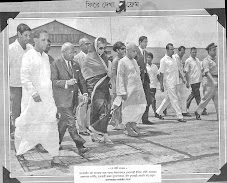



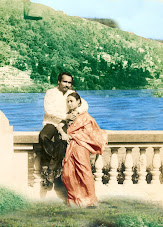






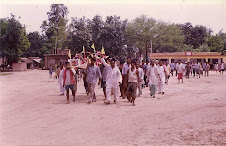

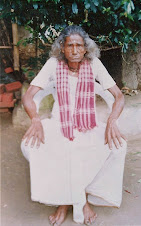
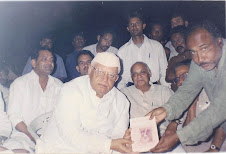
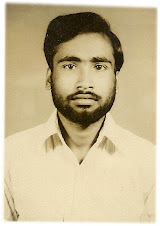



No comments:
Post a Comment